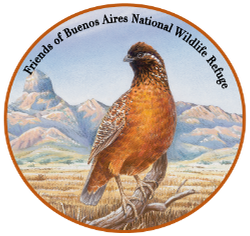Among Friends 24 February 2021, Cactus Wren
by Walt Anderson
There is nothing understated about the Cactus Wren; perhaps that’s why it’s Arizona’s State Bird! It’s often stated that it is brash, bold, and brazen; it truly makes a statement whenever it’s around with its rrar rrar rrar call like the delayed starter of an old car, as we oldtimers can remember.
The Cactus Wren is also our largest wren, though it has some even bigger cousins in South America.
While it occurs in many desert situations, this xenophile (freed from dependence on free water) also occurs in desert grassland and up into chaparral-covered slopes, as long as it finds the prickly company it likes to keep. It is found throughout the Buenos Aires National Wildlife Refuge, including all the way up Brown Canyon until it becomes Madrean oak woodland.
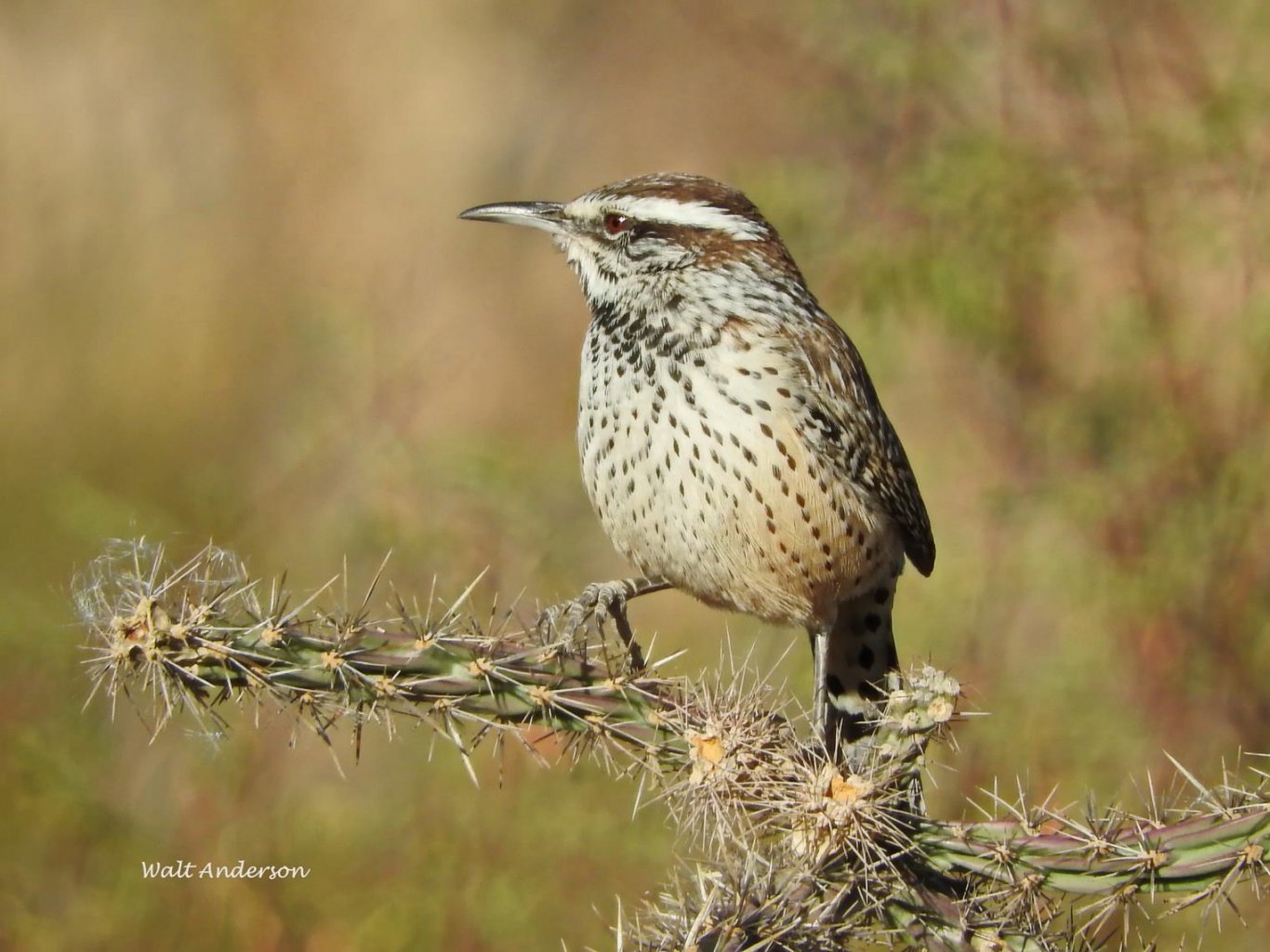
Appropriately named, the Cactus Wren has a real fondness for cacti, especially chollas, its favorite nest site. Highly adaptable, the Cactus Wren even thrives in residential areas as long as the spiny succulents are sufficient in number.
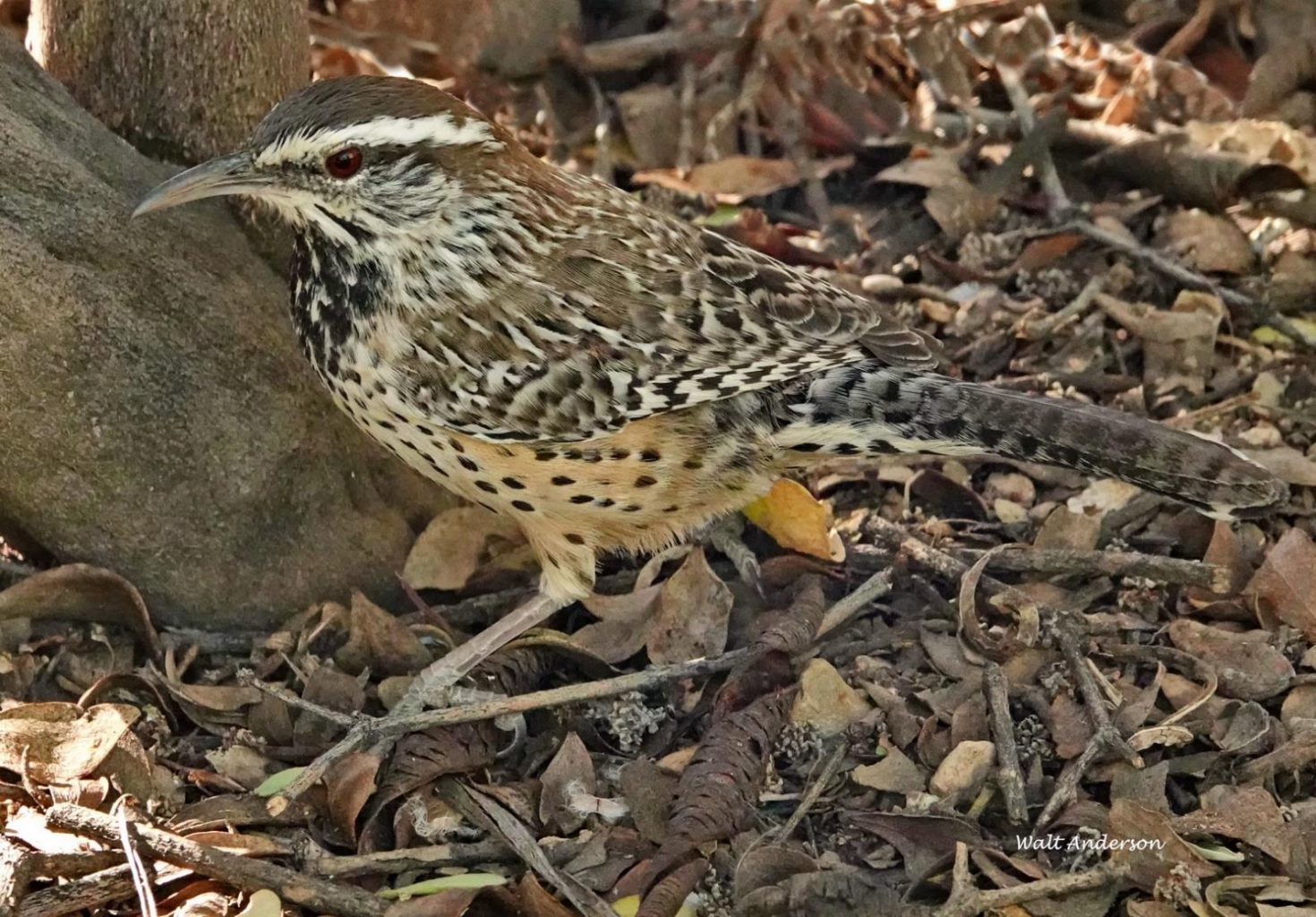
The Cactus Wren forages on the ground and in low vegetation, using its long beak as a probe and a pick. It gets its share of insects, like most wrens, but it also takes seeds and fruits, such as cactus pulp.
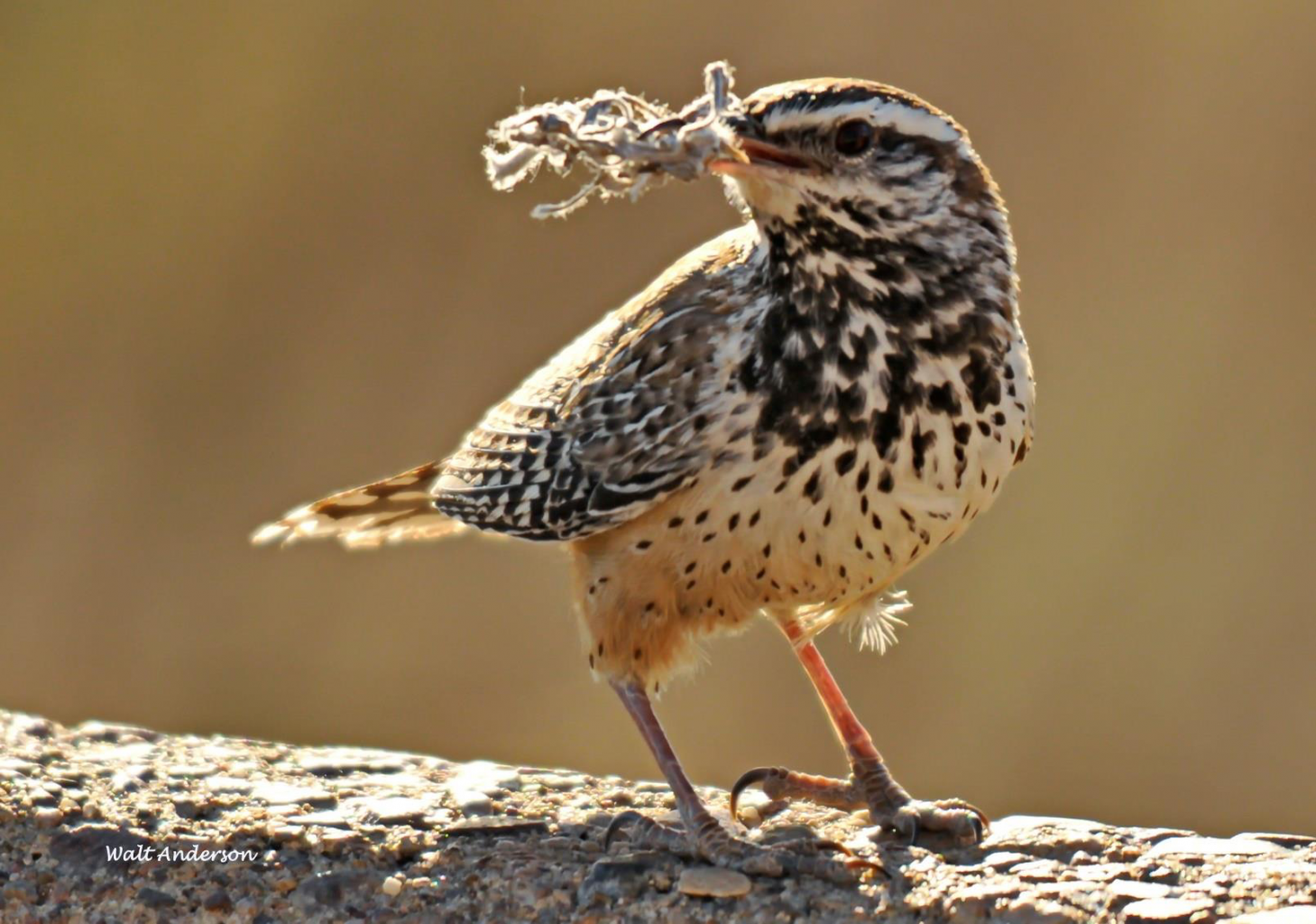
Cactus Wrens often have multiple nests in their territory, perhaps implying that this is a high-wren district, only for searching predators to find most of them disappointingly empty. The spiny supporting vegetation also deters most predators. Here a wren has gathered some soft lining for its nest. Parents jointly build the first nest, and when those young have left the nest, the male feeds the fledglings while the female incubates a second clutch. The mates may sleep in separate roosting nests.
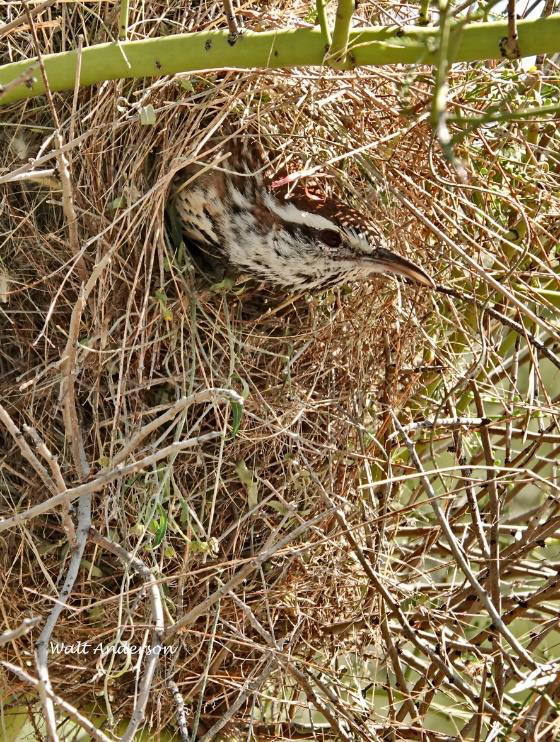
Globular nests about the size of a football have side entrances. Nests are usually of flexible grasses and forbs, unlike the sticks used in the globular, side-entrance nests of tiny Verdins or the flat cups of thrasher nests.
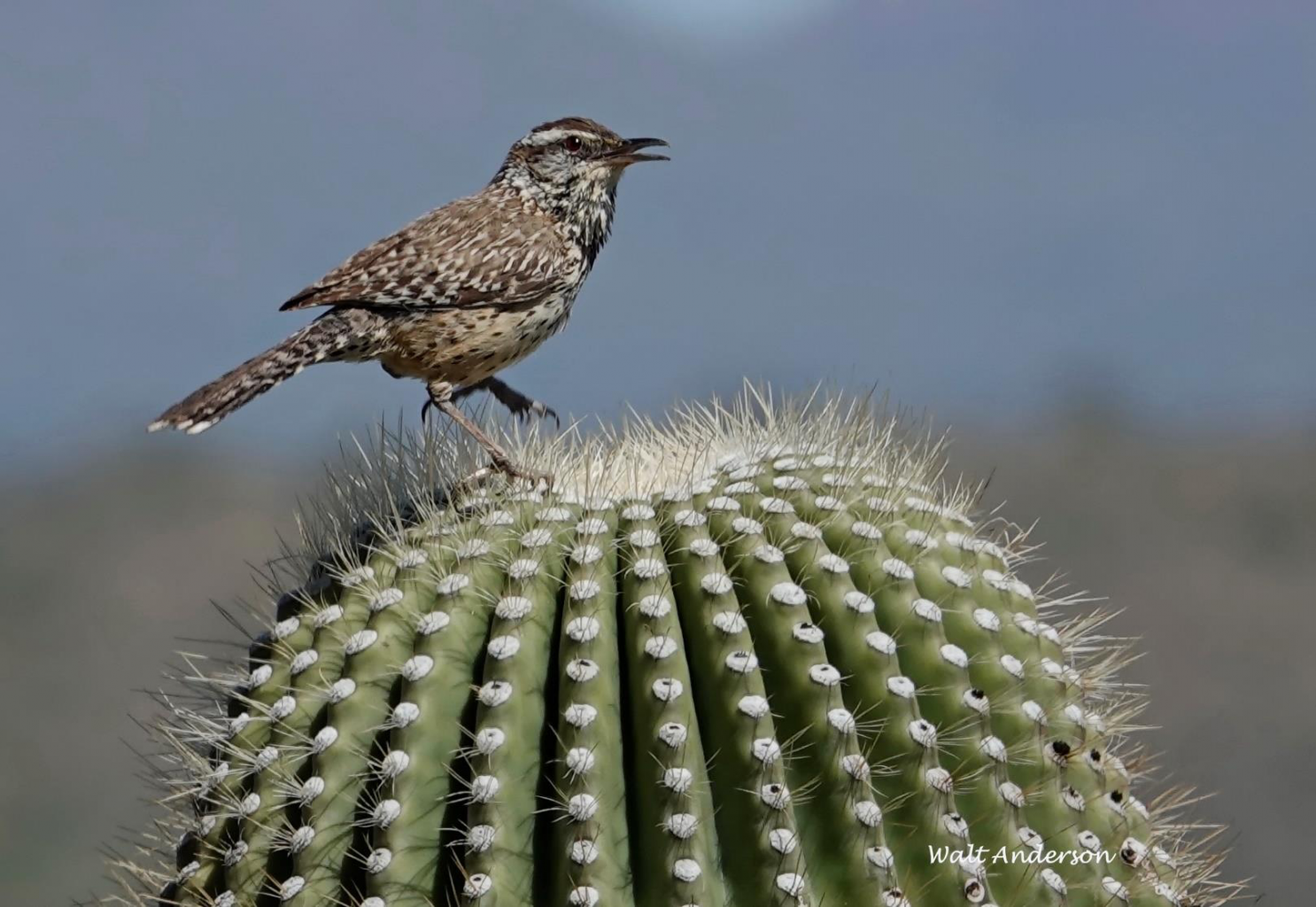
A Cactus Wren hot-footing it atop a saguaro. What a terrific choice for this to be Arizona’s state bird!
